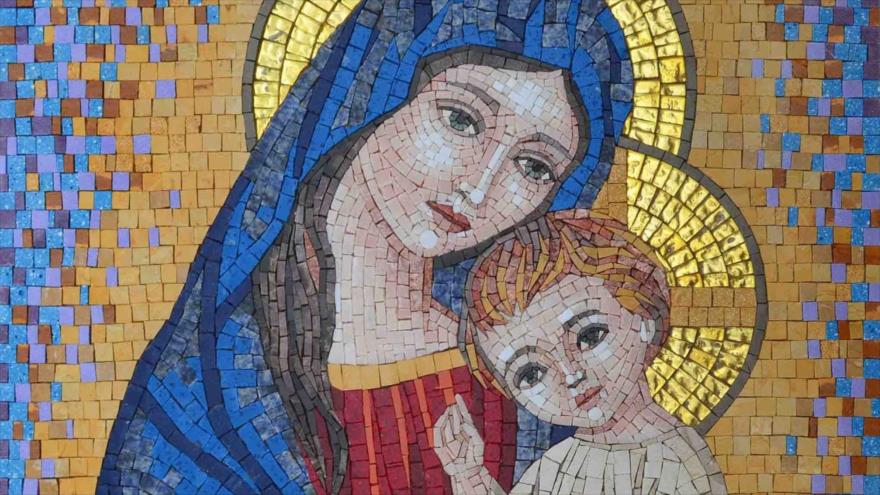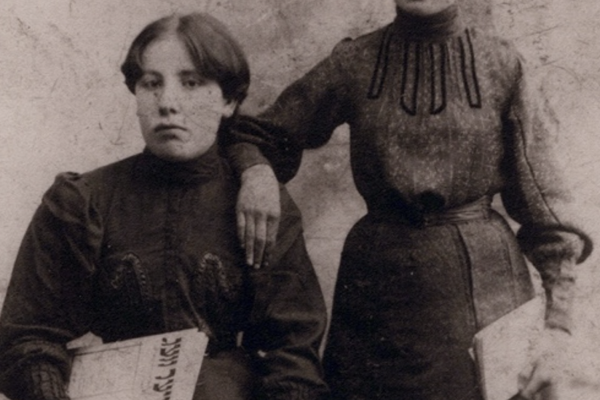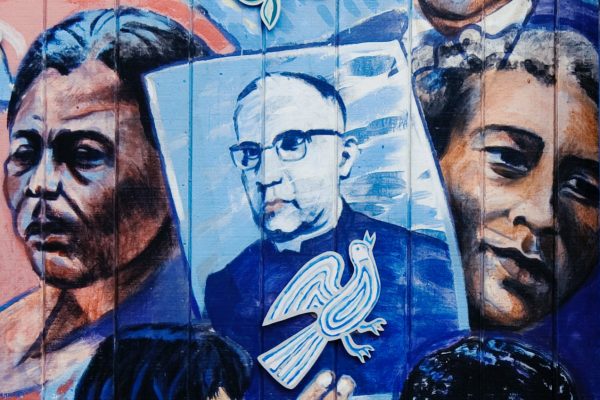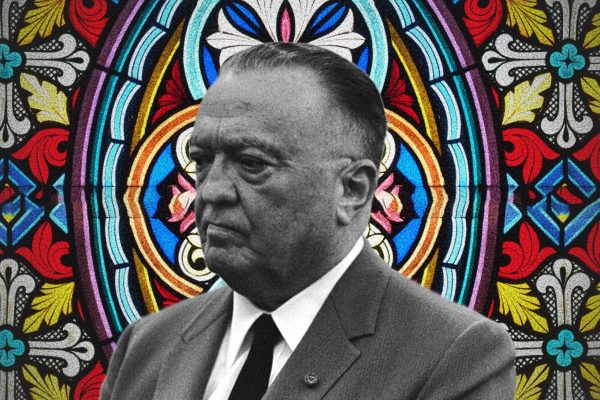For Christianity, Judaism, and Islam, humanity begins in roughly the same way: God creates Adam and Eve, gives them a garden to call home, and tells them to keep away from a certain tree. But Satan sweet-talks the two into disobeying and God exiles them for their transgression. This original act of disobedience is repeated time and again by Adam and Eve’s descendants. When they stray too far, God picks prophets from among them to call them back.
The serious divisions among the three great religions begin with Jesus. Jews, of course, do not recognize Jesus as divine or as a godly messenger. For Christians, Jesus is the son of God who died on the cross to save us from sin—the original sin of Adam and Eve. Muslims take a middle view: Jesus is one in a long line of prophets beginning with Adam and culminating in Muhammad. All prophets—including Abraham and the prophets sent to the Children of Israel—are human beings and all preach the same religion: monotheism.
Muslims do not resent, as some have suggested, the West’s “Judeo-Christian” heritage. Jews and Muslims share monotheism and the prophetic tradition, and have no idea what to make of Christianity’s Trinity. At the same time, Christians and Muslims share deep affinities, most importantly with regard to Jesus. Islam accepts Jesus as the messiah and word and spirit of God, and Muslims believe in the virgin birth. The big difference between Muslims and Christians is not over whether Jesus is a man of God, but whether that is all he is. In Islam God creates space and time, but is apart from it and does not take human (or any other) form. Whereas Christians know Jesus as the son of God, Muslims know him simply as the son of Mary.
• • •
Jesus may be the most distinctive of Islam’s prophets, beginning with the manner of his conception: the Angel Gabriel appears before his pious mother and announces the good news that she will bear a son—which is really not good news, since Mary is unmarried. (There is no Joseph in the Qur’an.) Mary is terrified but will follow God’s command, relayed by Gabriel: “We will make him a sign to the people and a mercy from Us.” When Mary shows up with baby Jesus, her people are astonished and begin to condemn her, until the infant speaks up in her defense.
Among the Qur’an’s 25 named prophets, Jesus is in the unique position of rejecting the divinity others assign to him. He repeatedly insists that he is nothing more than a prophet, a sign from God to direct people back to God. And to advance his ministry, he’s aided by further signs, as well as a gospel, which Muslims believe may have influenced the New Testament but isn’t identical with it.
In the Qur’an’s telling, Jesus’ preaching attracts a circle of disciples, but it also generates significant opposition from Israelites who refuse to believe in his mission. What happens next isn’t sketched out in much detail. What is clear is that although Jesus seems to be crucified, God actually “raise[s] him to Himself” before he can be nailed to the cross. So the Muslim Jesus is spared the crucifixion and lives still.
Jesus will eventually die a natural death, but only after he returns to the Earth. In Muslim eschatology, Jesus will descend from heaven onto a white minaret, usually identified with the Umayyad mosque in Damascus, where John the Baptist’s remains can be found. (John too is a prophet in Islam, closely linked with Jesus in the Qur’an.) Upon his return, Jesus will kill the antichrist, reunite the Children of Abraham, and usher in a golden age. Jabhat an-Nusra, a radical Sunni group backing the current Syrian uprising, has named its media outlet al-Manara al-Bayda, the “White Minaret.” In other words, they are Jihadis for Jesus.
• • •
Muhammad never claimed Islam was a new religion. Instead he described himself as a “slave of God” and “the seal of the prophets,” concluding the line that began with Adam. But Jesus, and specifically the Christian Jesus, interrupts this stream. How can Muhammad be the last prophet if Jesus’ followers believe that he is the son of God, that his death is necessary for human salvation, and that God is not one but one-in-three?
The Qur’an answers this challenge by employing Jesus as an apologist for Islam. When God asks, “Jesus son of Mary, did you tell humanity: Take me and my mother as two gods beside God?’ Jesus responds, ‘It cannot be that I would say that which is not my right to.’” There are numerous statements of this kind. In one instance, nature itself expresses horror at the notion of a divine Jesus: “The heavens are nearly split in two, the earth torn by chasms, the mountains prostrated and crushed.”
When Muhammad cleansed the Ka’ba of all its idols, he stopped his followers from touching the painting of Jesus and Mary.
This is Jesus’ burden, as Islam would have us see it. He is rejected in his life, condemned to death by his people. Well after he’s left the world, at the end of time, an antichrist will claim to be him—the false messiah. This may be why Jesus has to come back: to clear his name of the divinity ascribed to it and to confirm in person to the world that he worships the same God as Moses and Muhammad. It is over Jesus, after all, that the children of Abraham diverge. Who better to reunite them?
• • •
Like Christians, Muslims are not only concerned with Jesus’ relationship to the divine, but also with the way he lived. For Muslims, he is an icon of asceticism, worshipful, humble, and dedicated to an abstemious life. He is the Sufi’s ideal Sufi, perfectly devoted to God. The great eleventh-century scholar Abu Hamid al-Ghazali, who worked to reconcile Sufism with more legalistic approaches to Islam, cites Jesus time and again as a model of piety. This Islamic reverence for Jesus’ piety applies to other Christians as well, especially monastics. The Qur’an instructs: “Some of the People of the Book recite the scripture during the night hours and fall down in worship. They believe in God and the Last Day and are righteous, and they will be rewarded.”
It is little wonder then that Jesus is a source not only of disagreement between Christians and Muslims, but also of convergence.
Historically, demographics also played a role in the syncretic contact between the religions. Muslims were a minority in the Christian heartland they ruled, so when Christians began converting to Islam, by numbers alone they helped to tighten Islam’s embrace of Jesus. Converts enter a religion with their own ideas and traditions and rarely discard them so much as they repurpose them. This was true in the days of the Caliphate as well.
Consider the Dome of the Rock, the octagonal shrine on the Temple Mount and one of the oldest surviving Muslim structures. Its achievement is to link Muhammad with Jesus and Islam to Jerusalem. In form, it resembles a Byzantine martyrium—a building, often built beside a church, used to honor Christian martyrs, house relics, or mark critical moments in Jesus’ life. Following in that tradition, the Dome sits next to al-Aqsa Mosque, where, in the Qur’an, Muhammad led all the prophets in prayer. Qur’anic verses from the Chapter of Mary, telling the story of Jesus’ birth, decorate the walls of the Dome alongside calls on God to bless His servant and prophet, Jesus the son of Mary.
Ostensibly, this verse is directed at the local Christian population. But it was written in Arabic several generations before locals had adopted the language. Perhaps, then, this verse, and others in the Dome, were directed at Muslims, a tiny island in a Christian sea, as a plea for common ground. It was, at any rate, not the first time a Muslim sacred site included Jesus.
For Muslims, Mecca is the holiest city, while Jerusalem comes third, after Medina. When Muhammad arrived in Mecca from Medina in the year 630, Mecca voluntarily surrendered to his superior army. Thus victorious, he cleansed the Ka’ba of all its idols. But he stopped his followers from touching two paintings: one of his ancestor Abraham, and the other of Jesus and Mary. Though it was lost over time, the painting of the virgin mother and her child remained there, inside the building toward which Muslims pray, for years.
• • •
A few weeks ago, I took a walk along Fifth Avenue. Good Muslim that I am, I had forgotten about Christmas. Instead of a pleasant Saturday evening stroll, I was trapped in a crowd of thousands of shoppers. I wondered what Muhammad would make of it, of the holiday that commemorates the birth of his fellow prophet. Muhammad certainly was entrepreneurial; his early followers took the faith along the trade routes he’d once plied. But would he celebrate this way? Today the occasion of Jesus’ birthday requires that we become consumers in his name.
This is not Judeo-Christian heritage, but rather a repudiation of it. Both Christians and Muslims know this. The two groups share a deep reverence for, love of, and attachment to Jesus and his mother, and in both faiths Jesus is uniquely humble, profoundly compassionate, and concerned more with persons and their souls than with material things. He represents something we lack in this age: an ability to see the value in things that don’t have a price.








